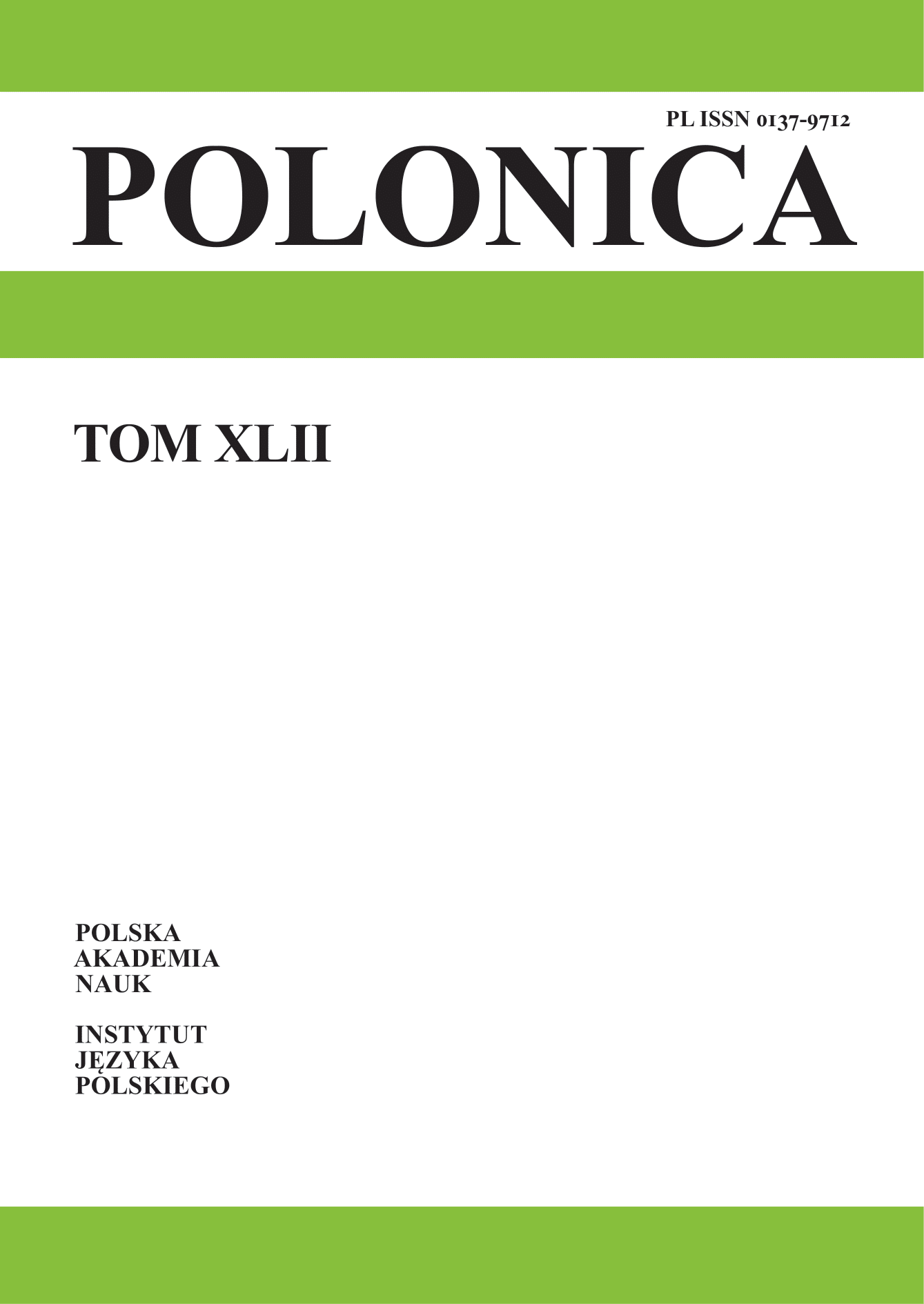Abstract
The article presents an analysis of the names and logotypes of companies, associations and other organizations operating for the benefit of the d/Deaf in Poland. The analysis concerns the relationship between the name (its meaning) and the way of identifying the community of d/Deaf people. The description covers both the names and graphic elements, and their symbolism, which are present in the logotypes. The findings of cognitive methodology are used to read the correlation between the name, its logotype and the values identified with the d/Deaf. The analysis covers 50 social chrematonims and logotypes of institutions from Poland who promote their activities on the Facebook social network or on Polish websites. The material collected allows one to notice that the most common way of identification with the d/Deaf community is the use of meanings and symbols of the Polish Sign Language (PJM), which is one of the most important values creating the image of the Deaf as a linguistic and cultural minority.
References
Bartmiński, J. (2008). Etnolingwistyka, lingwistyka kulturowa, lingwistyka antropologiczna? Język a Kultura, 20, 15–33.
Bogdanowicz, E. (2017). Konotacje nazw własnych (na materiale publicystyki prasowej). Białystok: Wydawnictwo UB.
Brzozowska-Woś, M. (2013). Media społecznościowe a wizerunek marki. Journal of Management and Finance, 11(1), 53–65.
Dunaj, M. (2015). GŁUCHY-ŚWIAT: Głuchota w perspektywie antropologii zaangażowanej. Łódź: Wydział Filozoficzno-Historyczny UŁ.
Gałkowski, A. (2008). Chrematonimy w funkcji kulturowo-użytkowej. Onomastyczne studium porównawcze na materiale polskim, włoskim, francuskim. Łódź: Wydawnictwo UŁ.
Kopaliński, W. (2007). Słownik symboli. Warszawa: Wiedza Powszechna.
Lech-Kirstein, D. (2015). Zwrot kulturowy w badaniach onomastycznych. Poznańskie Spotkania Językoznawcze, 30, 85–95.
Moroń E. i Zarzeczny, G. (2014). Głuchy – językowe podstawy stereotypu. W: M. Sak (red.), Edukacja głuchych (s. 118–127). Warszawa: Biuro Rzecznika Praw Obywatelskich.
Ruta, K., Wrześniewska-Pietrzak, M. (2013). Język jako centralny element budujący tożsamość mniejszości językowej (na przykładzie osób niesłyszących). Przegląd Humanistyczny, 5, 107–116.
Waląg, E. (2016). Nie taki motyl straszny, jak go malują – kulturowy obraz g/Głuchego. Annales Universitatis Paedagogicae Cracoviensis, 8, 78–92.
Wrześniewska-Pietrzak, M. (2017). Aksjologiczne wyznaczniki tożsamości w wypowiedziach głuchych i czasopiśmie środowiskowym „Świat Ciszy”. Poznań: Rys.
Zboralski, M. (2000). Nazwy firm i produktów. Warszawa: Polskie Wydawnictwo Ekonomiczne.

